In a world where content is king, creating engaging material can feel like trying to find a unicorn in a haystack. With endless blogs, videos, and social media posts flooding the internet, standing out is tougher than a two-dollar steak. But fear not! Mastering content creation best practices can turn even the most mundane topics into captivating goldmines.
Content Creation Best Practices
Content creation requires adherence to best practices to ensure effectiveness in a crowded digital space. High-quality content not only captivates audiences but also enhances visibility and credibility.
Importance of High-Quality Content
High-quality content serves as the cornerstone of successful digital marketing. It attracts attention and fosters trust among audiences. Engaging articles, videos, and infographics imbue brands with authority. Moreover, search engines prioritize well-researched, informative content, leading to improved rankings. According to HubSpot, companies posting 16 or more blog entries per month get 3.5 times more traffic than those that publish four or fewer. This statistic underscores the necessity of consistency and quality in content creation.
Impact on Audience Engagement
Audience engagement significantly increases through compelling content. Interactive elements, storytelling, and relatable themes resonate with viewers. Statistics reveal that visuals boost engagement by 94%, demonstrating the effectiveness of integrating images and videos. Additionally, content tailored to user interests fosters a sense of community and encourages social sharing. Engagement metrics, such as comments and shares, enhance brand visibility and extend reach. Constantly measuring these metrics allows for refining strategies and improving content relevance.
Key Elements of Effective Content

Effective content hinges on understanding the audience and crafting engaging elements. Mastering key components significantly amplifies content impact and audience connection.
Audience Research and Targeting
Audience research shapes content strategies. Identifying demographics, preferences, and pain points facilitates tailored content creation. Analyzing data sources, such as social media insights and surveys, helps understand what resonates with audiences. When creators align content with audience needs, engagement increases. Brands posting 16 or more articles monthly see a notable traffic boost. Additionally, segmenting the audience allows for personalized messaging, enhancing relevance and fostering connections. Gathering feedback continuously refines approaches, ensuring content meets evolving expectations.
Crafting Compelling Headlines
Compelling headlines grab attention immediately. They act as the gateway to content, so investing in strong, descriptive titles is crucial. Focus on clarity, using intriguing and action-oriented language. Incorporating relevant keywords enhances search visibility, while numbers or questions may entice clicks. Engaging headlines promise value and set expectations, which encourages users to explore deeper. Research indicates that captivating headlines can improve click-through rates significantly. Ultimately, well-crafted titles not only attract but also retain audience interest, encouraging further engagement with the content.
Types of Content Formats
Content formats vary widely, each serving specific purposes and engaging audiences in different ways. Utilizing the right format enhances audience retention and interaction.
Written Content
Blog posts, articles, and eBooks represent the core of written content. They provide in-depth information that educates and informs readers. Companies publishing 16 or more articles monthly see significant traffic increases. Clear, concise writing with engaging headlines captivates interest and boosts click-through rates. Incorporating SEO best practices, such as keyword optimization, helps improve visibility on search engines. Also essential is structuring content with subheadings, bullet points, and short paragraphs to enhance readability. Research-based writing establishes authority, fostering trust among audiences and encouraging shares on social media.
Visual Content
Visual content includes images, infographics, and videos. Statistics show that visuals can increase engagement by 94%. Infographics simplify complex information, allowing for quick comprehension and shareability. Videos enhance storytelling, providing dynamic ways to connect with audiences. Platforms such as YouTube and Instagram thrive on visual formats, enabling businesses to reach broader audiences. Using branding elements in visuals fosters brand recognition and loyalty. Essential is creating high-quality, relevant visuals that resonate with the target audience to maximize impact. Adapting visuals to align with audience preferences ensures content relevance and effectiveness.
Content Distribution Strategies
Effective content distribution strategies amplify reach and engagement. Both social media and email marketing present key opportunities for maximizing content visibility.
Utilizing Social Media
Leveraging social media platforms drives significant traffic to content. Choosing platforms aligned with the target audience enhances effectiveness. Regularly posting engaging updates allows brands to maintain visibility. Using visuals attracts attention, with statistics showing that visuals boost engagement by 94%. Posting at optimal times increases interaction rates, while utilizing hashtags enhances discoverability. Creating shareable content encourages social sharing, fostering a sense of community. Community engagement through comments and direct messages establishes relationships that build trust.
Email Marketing Techniques
Email marketing remains a powerful tool for content distribution. Segmenting audiences ensures tailored messaging that resonates. Crafting compelling subject lines boosts open rates, while personalized content increases relevance. Scheduling regular newsletters keeps recipients updated on new content. Incorporating call-to-action elements drives clicks to content. Additionally, analyzing email performance metrics allows for strategy refinement. Frequent testing of different formats and styles helps identify what resonates best with subscribers. Utilizing automation tools streamlines the process, saving time and increasing efficiency.
Measuring Success in Content Creation
Measuring success in content creation involves analyzing various metrics that reflect audience engagement and content performance. Identifying and tracking specific indicators can provide valuable insights for refining strategies.
Key Performance Indicators (KPIs)
Key performance indicators offer measurable insights into content effectiveness. Metrics such as website traffic, bounce rates, and average time spent on pages gauge audience interest. Engagement rates, including social shares and comments, indicate how well content resonates with viewers. Conversion rates determine if content effectively drives desired actions, like newsletter sign-ups or purchases. The balance between these metrics provides a comprehensive view of content impact, guiding adjustments and improvements. It’s essential for content creators to regularly review these KPIs for ongoing strategy enhancement.
Tools for Analytics
Analytics tools facilitate data tracking and performance analysis. Google Analytics stands out for monitoring website traffic and user behavior, offering detailed reports on audience interactions. Social media analytics platforms, such as Hootsuite and Sprout Social, provide insights into engagement metrics on various channels. Email marketing services like Mailchimp include tracking features for open rates and click-through rates, essential for assessing newsletter effectiveness. Utilizing these tools allows content creators to collect actionable data, optimizing future content based on audience preferences and behaviors. Regular evaluation fosters continuous improvement and alignment with content goals.

